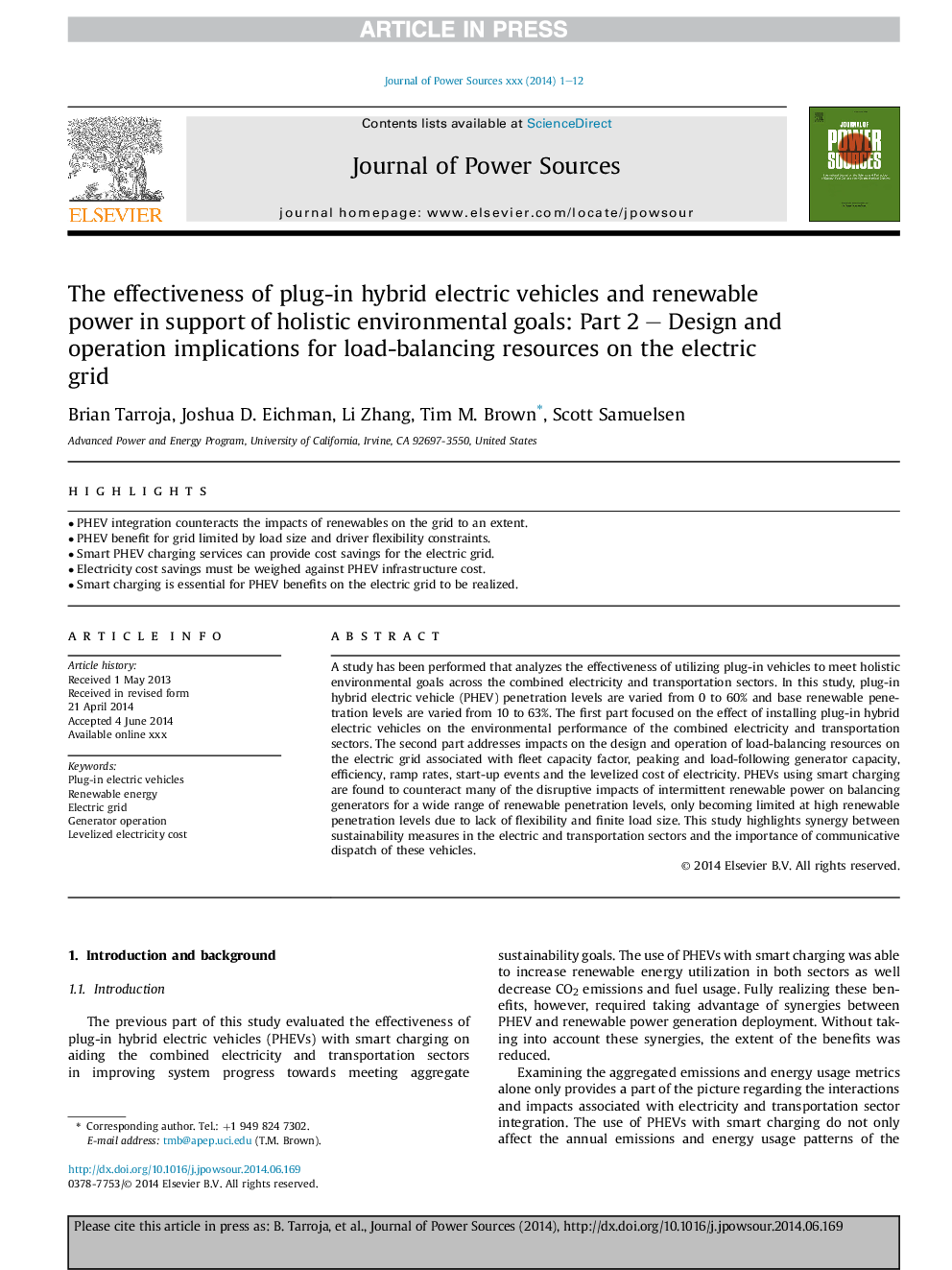| Article ID | Journal | Published Year | Pages | File Type |
|---|---|---|---|---|
| 7734460 | Journal of Power Sources | 2015 | 12 Pages |
Abstract
A study has been performed that analyzes the effectiveness of utilizing plug-in vehicles to meet holistic environmental goals across the combined electricity and transportation sectors. In this study, plug-in hybrid electric vehicle (PHEV) penetration levels are varied from 0 to 60% and base renewable penetration levels are varied from 10 to 63%. The first part focused on the effect of installing plug-in hybrid electric vehicles on the environmental performance of the combined electricity and transportation sectors. The second part addresses impacts on the design and operation of load-balancing resources on the electric grid associated with fleet capacity factor, peaking and load-following generator capacity, efficiency, ramp rates, start-up events and the levelized cost of electricity. PHEVs using smart charging are found to counteract many of the disruptive impacts of intermittent renewable power on balancing generators for a wide range of renewable penetration levels, only becoming limited at high renewable penetration levels due to lack of flexibility and finite load size. This study highlights synergy between sustainability measures in the electric and transportation sectors and the importance of communicative dispatch of these vehicles.
Related Topics
Physical Sciences and Engineering
Chemistry
Electrochemistry
Authors
Brian Tarroja, Joshua D. Eichman, Li Zhang, Tim M. Brown, Scott Samuelsen,
